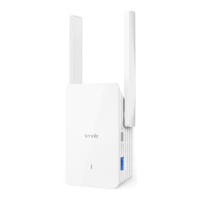Version1.0
62
10.2 OFDMA
Before 802.11ax, Orthogonal Frequency Division Multiplexing (OFDM), a modulation mode is used
for data transmission. OFDM divide the whole channel into several sub-channels (sub-carriers),
and transmit data through these sub-channels, differentiating different data. At some point, data
sent by users will occupy the whole channel. If several users need to use OFDM to send data, they
can only wait in line, wasting channel resources.
802.11ax introduced more efficient data transmission mode, Orthogonal Frequency Division
Multiple Access (OFDMA), a multi-address access technology. It uses OFDM to divide the whole
channel to into several sub-channels (sub-carriers), with user data borne on resource blocks rather
than in the whole channel, thereby allowing parallel user data transmission at the same time. It is
unnecessary for users to wait in line, thus decreasing time delay and improving users’ internet
experience.
OFDM data transmission mode:
OFDMA data transmission mode:

